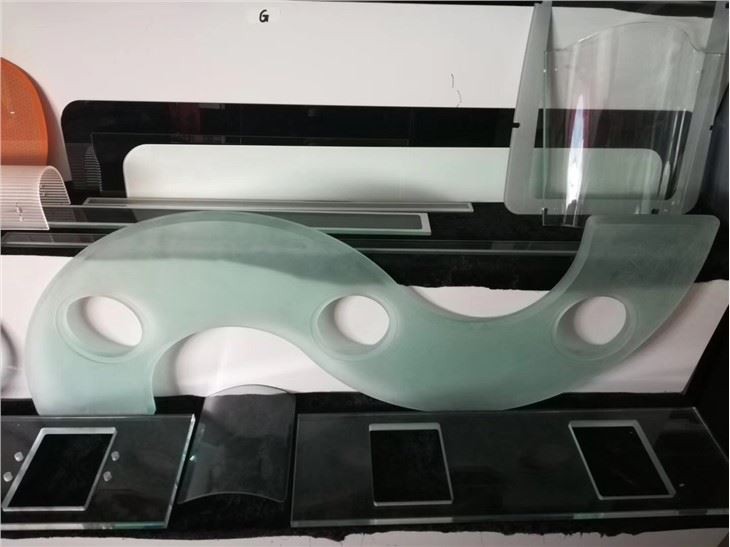Can a glass beveling machine be used for beveling mirror glass?
As a seasoned supplier of glass beveling machines, I often encounter inquiries from clients about the compatibility of our machines with mirror glass. This is a valid question, as mirror glass has its own unique characteristics that may influence the beveling process. In this blog post, I'll delve into the details of whether a glass beveling machine can be used for beveling mirror glass, exploring the technical aspects, potential challenges, and the benefits of doing so.
First, let's understand the basic principles of a glass beveling machine. These machines are designed to create a beveled edge on glass by grinding and polishing the edges at a specific angle. They typically use diamond wheels or other abrasive tools to shape the glass, and the process can be adjusted to achieve different bevel widths and angles. The primary function of a beveled edge is to enhance the aesthetic appeal of the glass, adding a touch of elegance and sophistication to various applications such as furniture, architectural elements, and decorative pieces.
Now, let's turn our attention to mirror glass. Mirror glass is essentially a type of glass with a reflective coating applied to one side. This coating is usually made of a thin layer of metal, such as silver or aluminum, which reflects light and creates a mirror-like effect. The presence of this coating raises concerns about whether a glass beveling machine can safely and effectively bevel mirror glass without damaging the reflective surface.
The good news is that, in most cases, a glass beveling machine can indeed be used for beveling mirror glass. However, there are several factors that need to be considered to ensure a successful beveling process.
One of the key considerations is the type of beveling machine being used. Some glass beveling machines are specifically designed for use with mirror glass and have features that minimize the risk of damage to the reflective coating. These machines may use special grinding wheels or polishing techniques that are gentle on the mirror surface. For example, a machine with a variable speed control allows the operator to adjust the grinding speed according to the thickness and type of mirror glass, reducing the likelihood of scratching or chipping the coating.
Another important factor is the preparation of the mirror glass before beveling. It is crucial to clean the glass thoroughly to remove any dirt, dust, or debris that could cause scratches during the beveling process. Additionally, the glass should be properly secured in the beveling machine to prevent it from moving or vibrating, which could also lead to damage.
The angle and width of the bevel also play a role in the beveling process. A shallower bevel angle and a narrower bevel width are generally less likely to cause damage to the reflective coating. When beveling mirror glass, it is advisable to start with a small bevel angle and gradually increase it if necessary, while closely monitoring the condition of the mirror surface.


In addition to these technical considerations, there are also some potential challenges that may arise when beveling mirror glass. One of the main challenges is the risk of delamination of the reflective coating. Delamination occurs when the reflective coating separates from the glass surface, resulting in a cloudy or uneven appearance. This can be caused by excessive heat generated during the beveling process, improper grinding pressure, or the use of abrasive tools that are too aggressive. To minimize the risk of delamination, it is important to use a coolant or lubricant during the beveling process to keep the glass cool and reduce friction.
Another challenge is the difficulty of achieving a consistent bevel on mirror glass. The reflective surface of the glass can make it challenging to accurately measure and mark the bevel angle, especially if the glass is large or has an irregular shape. To overcome this challenge, it is recommended to use a template or a jig to guide the beveling process. A template can be made from a piece of cardboard or plastic and can be used to mark the bevel angle on the glass before beveling.
Despite these challenges, there are several benefits to beveling mirror glass. Beveled mirror glass can add a touch of luxury and sophistication to any space. It can be used in a variety of applications, such as bathroom vanities, wall mirrors, and decorative mirrors. The beveled edges create a visual interest and enhance the overall aesthetic appeal of the mirror.
Furthermore, beveling mirror glass can also improve the durability of the mirror. The beveled edges help to strengthen the glass and reduce the risk of chipping or cracking. This is particularly important for mirrors that are used in high-traffic areas or in applications where they may be subject to impact or vibration.
In conclusion, a glass beveling machine can be used for beveling mirror glass, but it requires careful consideration of several factors to ensure a successful beveling process. By choosing the right beveling machine, preparing the glass properly, and taking appropriate precautions, it is possible to achieve a high-quality beveled edge on mirror glass without damaging the reflective coating.
If you are interested in beveling mirror glass or other types of glass, we offer a wide range of Round Glass Cutting Machine, Mirror Cutting Machine, and Automatic Glass Edge Polishing Machine that are designed to meet your specific needs. Our machines are equipped with the latest technology and features to ensure a precise and efficient beveling process.
If you have any questions or would like to discuss your glass processing requirements, please feel free to contact us. We are always happy to provide you with expert advice and assistance.
References
- Glass Processing Handbook: A Comprehensive Guide to Glass Cutting, Grinding, and Polishing
- Mirror Glass Manufacturing and Applications: Techniques and Best Practices
